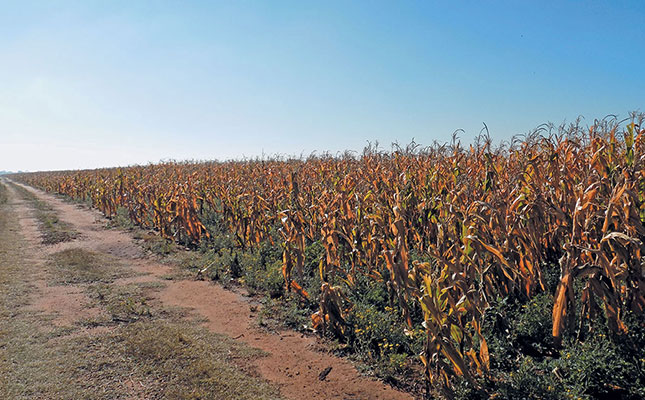
In its latest estimate for 2017/2018, the Crop Estimates Committee (CEC) has reduced the area planted to commercial maize in South Africa.
Reacting to this announcement, Grain SA CEO Jannie de Villiers said that it was to be expected.
“We as Grain SA are not surprised that [farmers] didn’t manage to reach the intentions to plant,” he said, adding that it had been a very difficult planting season. “The rain simply arrived too late in many parts.”
In its initial data on intentions to plant, the CEC had suggested that more than 2,4 million hectares would be planted to maize.
But in its preliminary estimate for the 2017/2018 summer grain production, released on Tuesday, the committee set the area planted at about 2,3 million hectares, a drop of about 160 000 hectares.
The CEC stated that farmers had been unable to plant their intended crop due to “less favourable rainfall and warm temperatures”, especially in the Free State and North West. It added that the latest area estimate was a decline of more than 12% on last season.
Agbiz economist Wandile Sihlobo said that this figure was nonetheless “better than the market consensus forecast of 18% year-on-year decline in maize plantings”.
Agricultural economist Johan Willemse said the consensus amongst hundreds of maize farmers he had spoken to was that yield would also be far lower this season.
He said that the rain had fallen in some regions only last week. Farmers had planted late maize despite the risk of frost, as even low yields would have provided some feed for livestock. This also explained why producers chose late maize over sunflower.
Willemse said that although it was still early for a prediction, his calculations had revealed that maize yield could drop 25% from last year. “Many places had heat and drought damage in January,” he said.
De Villiers said the shift from white to yellow maize production, in line with market demand, had been promising, as yellow maize was more exportable.
He added that Grain SA was also pleased about the increase in area planted to soya bean. Despite not reaching the original intended area, the figure of more than 700 000 ha represented a year-on-year increase of more than 22%.
Sihlobo said it had been estimated that the entire summer grain crop would decrease 7% year-on-year. White maize, sunflower seed, groundnuts and sorghum plantings were the crops mostly responsible for the downswing.
The CEC also released its penultimate wheat estimate, leaving this unchanged at about 1,47 million tons. This represented a 23% decline from last season’s production.
De Villiers said that many of the wheat farmers he had met at regional meetings in the Western Cape had told that they would have to throw in the towel. “It’s difficult to hear that from hardened farmers who are needed by the country,” he said.
He said Grain SA was nonetheless positive about wheat research and new breeding programmes launched three years ago.
“We’re optimistic that something will come out of this to help increase productivity,” he said.











